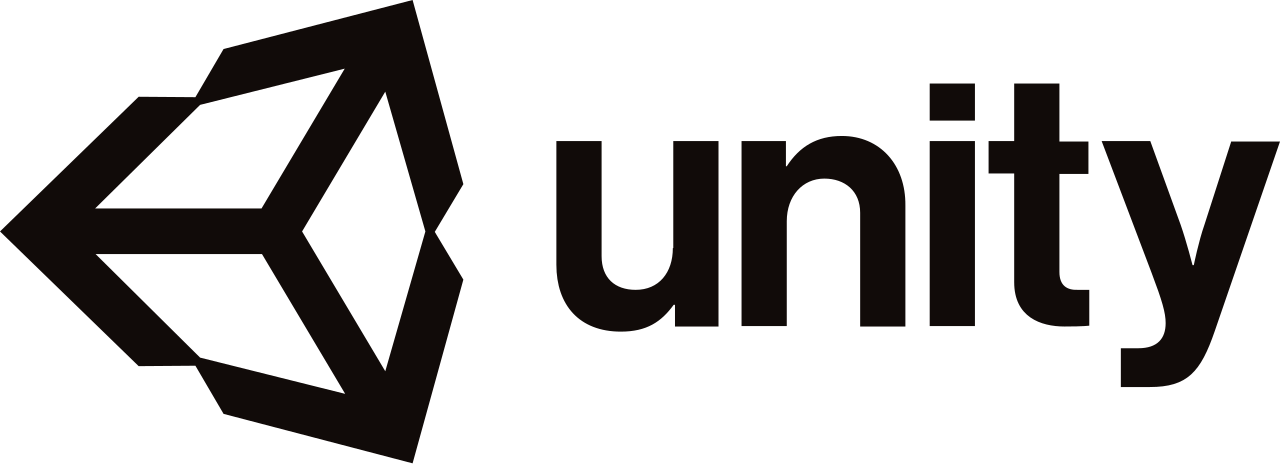
Hi Everyone,
The creation of content has come a long way from the 2D static features. The industry has evolved to where consumers are demanding dynamic real-time 3D content. Gaming has embraced the revolution with many industries to follow. Today we will breakdown Unity Software (U), the company with the goal to “enable more people to become creators”.
Business Summary:
Unity provides a platform to create and operate interactive, real-time 3D content. The creators utilize a set of software solutions to build, run, and monetize 2D and 3D content across phones, tablets, PCs, consoles, and augmented/virtual reality devices. The platform is widely used in developing very popular games and shifting to other industries. As one of the world’s most popular gaming engines, Unity has focused on ensuring its platform focuses on the following pillars:
Engaging and Immersive Experience
Real-Time interaction with developed content
An interactive experience to connect with content and developers
Technology Features: Unity’s platform includes Create Solutions and Operate Solutions to offer an ecosystem for developers.
Create Solutions: This feature is powered by a software development engine that provides all the tools for creators to create, edit, run, and deploy real-time 2D and 3D content across 20 platforms. The platform offers custom scripting tools, graphics, animation, audio tools, networking, user interface tools and many more.
Operate Solutions: This feature allows customers to engage and grow their end-user base. The engine offers personal advertising, contextual advertising, end-user engagement, and many other features to acquire end-users for customers, retain them and ultimately monetize the product.

The company’s vision as stated in the S-1, is: “We believe the world is a better place with more creators in it.”
Industry:
For many years, content creation regarding photos and videos involved capturing three dimensional images through a 2D lens and projected into a 2D surface. Technology now is evolving and shifting the industry to interactive, real-time 3D content. This change has fueled gaming and now influencing other industries such as architecture, automotive, and film. The proliferation of real-time 3D content has been fueled by compute power, platforms and devices, distribution, and connectivity through the internet. As a result, the following trends have emerged that Unity has implemented in its platform.
Fast, High-Quality Production with Real-Time Technology
Create Once and Deploy Anywhere
Set of Solutions for Creators of All Types
Technology to keep pace with new hardware platforms
Market Opportunity:
The total addressable market across gaming and other industries is around $29 billion.
Gaming: The market opportunity is estimated around $12 billion with over 15 million potential creators and expected to grow to $16 billion by 2025.
Industries Beyond Gaming: The market opportunity is estimated around $17 billion, based on software developers, artists, architects, and other developers.
The company highlights that there is significant opportunity in augmented reality and virtual reality applications which will represent a significant portion of the business in the future. This will lead to industries beyond gaming where there are over 37 million engineers and technicians as potential customers.
Business Model Landscape:
Unity has a series of business models to generate revenue.
Create Solutions is used to generate subscription and associated professional services
Pricing models are designed to support creators at many stages. Customers with $100,000 in annual revenue/funding purchase the following plans, Unity Plus, Unity Pro or Unity Enterprise.
Operate Solutions is used to generate a revenue share and usage-based revenue
Majority of the revenue is generated under a revenue-share model and the remainder is usage-based revenue.
Strategic Partnerships involves contracts with hardware, operating system, device, game console, and other technology providers
Asset Store provides revenue from sales of tools, content, and softwares for real-time interactive games and applications
The distribution of revenue is based on the following breakouts:
Create Solutions: 28%
Operate Solutions: 61%
Strategic Partnerships and Other: 11%
The following customer landscape is created based on the revenue model Unity has created:
Global customers distribution is as follows:
EMEA (38%), Asia-Pacific (32%) and Americas (30%)
Unity operates with a strong partnership in China
Customer is defined as an entity that generated revenue. (Example: All of Zynga’s Unity subscriptions and services purchased as considered as one single customer)
716 customers generated >$100K in trailing twelve months composing 74% of the subscription revenue
Gaming Customers: Electronic Arts, Nintendo, Take-Two Interactive, and Zynga
Popular Games: Arena of Valor, Honor of Kings, Pokémon GO
Customers beyond Gaming: Skanska (large construction company), Volvo Cars, Moving Picture Company (Disney’s 2019 recreation of Lion King)
Strategic Relationships: Apple, AutoDesk, ARM, Google and DeepMind, Intel, Microsoft, Tencent.
93 of the top 100 game dev studios were Unity customers
53% of the top 1,000 mobile games on the Apple App Store and Google Play were made with Unity
50% of mobile, PC and Console games combined were made with Unity
Competitive Strengths (Moats):
The company aims to become the 3D operating system of the world. According to the S-1 filing, Unity has identified a series of advantages.
Platform: The software engine provides a strong ecosystem for developer to create and monetize. As a result, 2 billion monthly active end-users consume the content created and an average of 15,000 new project are created each day.
Market Leader in Game Development and Strong Brand Awareness: Unity is aiming to be a monopoly with their platform and the brand is synonymous with real-time 3D development.
Innovation, Talent, and R&D: $450 million in R&D and 56% of the headcount in the company is focused on R&D. To date a dozen acquisitions have been conducted to acquire talent and technology.
Data Footprint and Sophisticated Analytics: Analyze and capture end-user behavior and application performance data from over 50 billion in-app events per day across 20 unique platform devices.
Unity Creator Community: 1.5 million active creators are developing 8k games and application per month. 5.1 hours a day are spent by active creators. Additionally, partnerships with Unity make it easy for creators to interact and deploy their product.
Competition/Risks:
The company has highlighted certain competitive and operational risks that may affect its performance.
Competition: From the creation feature, the main competitors are Unreal Engine (Epic Games), and Cocos2d (Chukong Tech). From the monetization/advertising features the main competitors are Amazon, Google, Microsoft and Tencent (mainly partners).
Substantial Revenue concentrated in one service: Customers depend on Unity as a primary source of their revenue due to platform. Growth will be challenged based on demand for new features, and functionality to deliver value to customers. Unity is on the hook to derive a large base of advertisers to the platform
Operating System Platform and Application Store regulations: The company (Apple, Google) policies govern the promotion, distribution, content and operation of applications and content. A change in fee structure or technical requirements can incur costs.
Strategic Relationships: Separate multi-year agreements are created and currently impact 11% of revenue. Acquisitions of strategic partners, or the fact that certain partners compete with certain features of Unity’s platform can also impact performance
Expansions into other industries: Growth is dependent on penetrating non-gaming industries (construction, automotive, film, etc.) Cost, performance, and perceived value are important factors to create adoption in these markets. Substantial investments to allow the platform to adapt to these diverse industries is key
Team:
The company’s founders and executive team are veterans in the software gaming space:
John Riccitiello, CEO: Riccitiello served as the CEO and COO for Electronic Arts.
Joachim Ante, Co-Founder and CTO: Ante co-founded the company and developed the core of the Unity Platform as a teenager.
Luc Barthelet, SVP of Technology: Barthelet founded TirNua, a game company, and served as CEO for a company that built a computational knowledge engine
Danny Lange, SVP of AI, and ML: Served as Head of ML at Uber Technologies.
Sylvio Drouin, SVP of Unity Labs: Served as CTO at Xtranormal Technology that developed a 3D storytelling tool. He authored 15 patents.
Financial Performance:
The company has 263 million outstanding shares at a price of $89.40 resulting in a market cap of $23.5 billion.
The company has achieved $541.8 million in revenue for year 2019, a 42% increase over the $380.8 million earned in 2018. More recently the company earned $351.3million in six months ended 06/30/20 resulting in a 39% YOY. Majority of the revenue is international.
While the company is expecting steady growth, it has not achieved profitability. As of 12/31/2019, and 2018, the company’s net losses were $163.2 million and $131.6 million. Gross Margins for the business as of 12/31/2019 were around ~79%.
Additionally, as of June 30, 2020, the net dollar retention rate for Unity was 142%. During the year majority of the increase in the rate was due to increase use in Operate Solutions by existing customers.

Unity plans to continue growth through the following strategies:
Investing in Innovation: MARS focuses on augmented and virtual reality
Growth with Existing Gaming Customers: expand subscription services
Growth among Developers: Investing in free platform and education will convert creators to become future Unity users
Growth across Industries beyond Gaming: 3D content in business, construction, and other industries
Global Market expansion: The gaming market in Asia is estimated at $70 billion
- Igli
You can access and download the detailed report here which will include high-level financials. If you like the content please make sure to share this newsletter, share this post, or subscribe (if you have not already)!














Unity Software (U) Breakdown